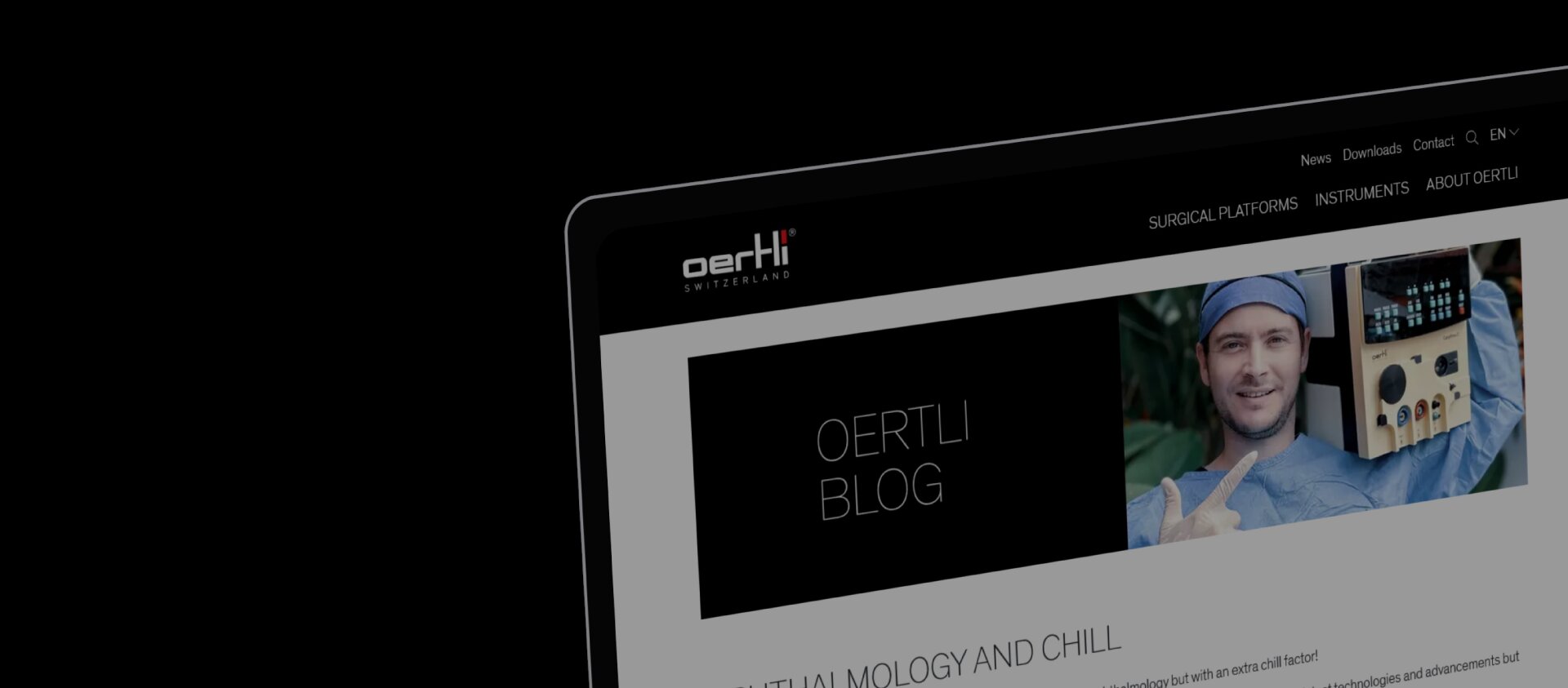
How to become a phaco surgeon: Beginners Guide with Prof. Kai JAnuschowski - Part 1
Published: 28/03/2025, Reading time: 4 minutes
Phacoemulsification is a highly refined surgical skill that requires extensive training, precision, and practice. This blog post summarizes key insights from the video series "How to Become a Phaco Surgeon," featuring Prof. Kai Januschowski (Germany) and Dr. Lukas Bisorca-Gassendorf (Germany). Their journey provides an invaluable roadmap for aspiring cataract surgeons.
First Day in the OR: Overcoming the Initial Challenges
Starting as a phaco surgeon is overwhelming. The transition from theory to hands-on surgery presents numerous challenges. Dr. Bisorca-Gassendorf emphasizes the importance of wetlabs as a preparatory step:
"Before you go to the O.R., it's always better to do a wetlab... This helped me a lot in terms of learning to deal with the microscope and the settings of the machine."
However, even with preparation, the first surgery can be daunting. Depth perception, hand stability, and adapting to the surgical environment take time to develop. Prof. Januschowski advises:
"Try to have done [the foot pedal, the table, the draping] at least 20 times before you really go into the patient."
The initial goal should not be perfection but familiarization with the surgical process.
Tunnel and Sideport Incisions: The Foundation of Phaco Surgery
A well-executed main incision and sideports are critical for a successful phaco surgery. Early-stage surgeons often struggle with tremors and eye movement, as Dr. Bisorca-Gassendorf shares:
"You see that the eye is moving too much. Way too much."
Finding the right armrest position and controlling instrument pressure helps stabilize hand movements. Incision placement is also crucial. As Prof. Januschowski explains:
"Modern cataract surgery is always from the temporal side."
Additionally Dr. Lukas Bisorca-Gassendrof explains: “If you place the incision closer to the limbus, the risk of endophthalmitis should technically be lower, and then the wound should seal better, which is an important factor in surgical success”.
Capsulorhexis: Mastering the Signature Step
Capsulorhexis is often the most feared step in phaco surgery. Even experienced surgeons find it challenging:
"The capsulorhexis is the ultimate nemesis of every cataract surgeon... Even if you have performed 20,000 of them, it will always be a challenge."
Whether using a cystotome or forceps, precision is key. Prof. Januschowski describes it as the surgeon’s signature, comparing it to a postcard:
"If you have a really messed-up capsulorhexis, everyone will notice it."
A poor capsulorhexis can lead to intraoperative complications, making the entire surgery more difficult. Training to perform consistent, round, and centered capsulorhexis is essential.
To address this challenge, we have developed the high-frequency capsulotomy which allows to open the capsular bag without tearing by forceps or needles.
Hydrodissection: Ensuring a Mobile Nucleus
Hydrodissection separates the lens nucleus from the cortex, ensuring smooth nucleus removal. Key principles include:
- Watching for the fluid wave: “I see a wave.”
- Pressing down on the nucleus: “Push a little bit down on the nucleus in order to have the BSS coming up and not be trapped.”
- Avoiding posterior capsule blowout: “Make sure you can twist and turn it.”
Dr. Januschowski highlights that hydrodissection may seem simple but is often underestimated:
"Hydrodissection looks easy if you can do it, but it is hard to achieve."
If a Hydrodissection is not properly done it can lead to complications like posterior capsule rupture, so this surgery step is crucial.
Grooving vs. Direct Chop: Choosing the Right Nucleus Management Technique
The choice between grooving and direct chop depends on experience and cataract density.
Grooving:
- Helps beginners understand lens depth.
- Requires a visible red reflex to judge depth correctly.
- Often results in incomplete grooves due to hesitation.
Dr. Bisorca-Gassendorf shares his early experience:
"When I used to groove, I did not go deep enough."
Direct Chop:
- More efficient once adequate experience is gained.
- Suited for harder nuclei.
"The direct chop made a real big change in the learning curve."
Prof. Januschowski advises beginners to switch to direct chop after around 200–250 cases, focusing on proper chopper depth for successful nuclear division.
Final Thoughts: The Learning Curve Never Ends
Every phaco surgeon faces complications and failures. Prof. Januschowski reminds trainees:
"Do not expect it to go well because it will not go well."
Each step—incision, capsulorhexis, hydrodissection, and nucleus management—requires practice and refinement. Standardization, mentorship, simulation and wetlab training help develop consistency and confidence.
Phaco surgery is a journey of continuous improvement. Through perseverance, technical refinement, and learning from experience, surgeons can master this intricate procedure and provide optimal outcomes for their patients.
Phaco History
Check out our blog about the history in phacoemulsification - and more.
Robotics and AI in ophthalmology
Discover the latest innovations and get all the information you need on this topic.
Glaucoma and HFDS
HFDS shows its love for the eyes by offering a minimally invasive and gentle approach to glaucoma treatment. Check it out.
Oertli data on file
This blog post now accurately references the provided sources in the correct order, ensuring clarity and proper attribution of information. If you have further adjustments or additions, feel free to ask!
This blog was written with the support of artificial intelligence (Chat-GPT).
